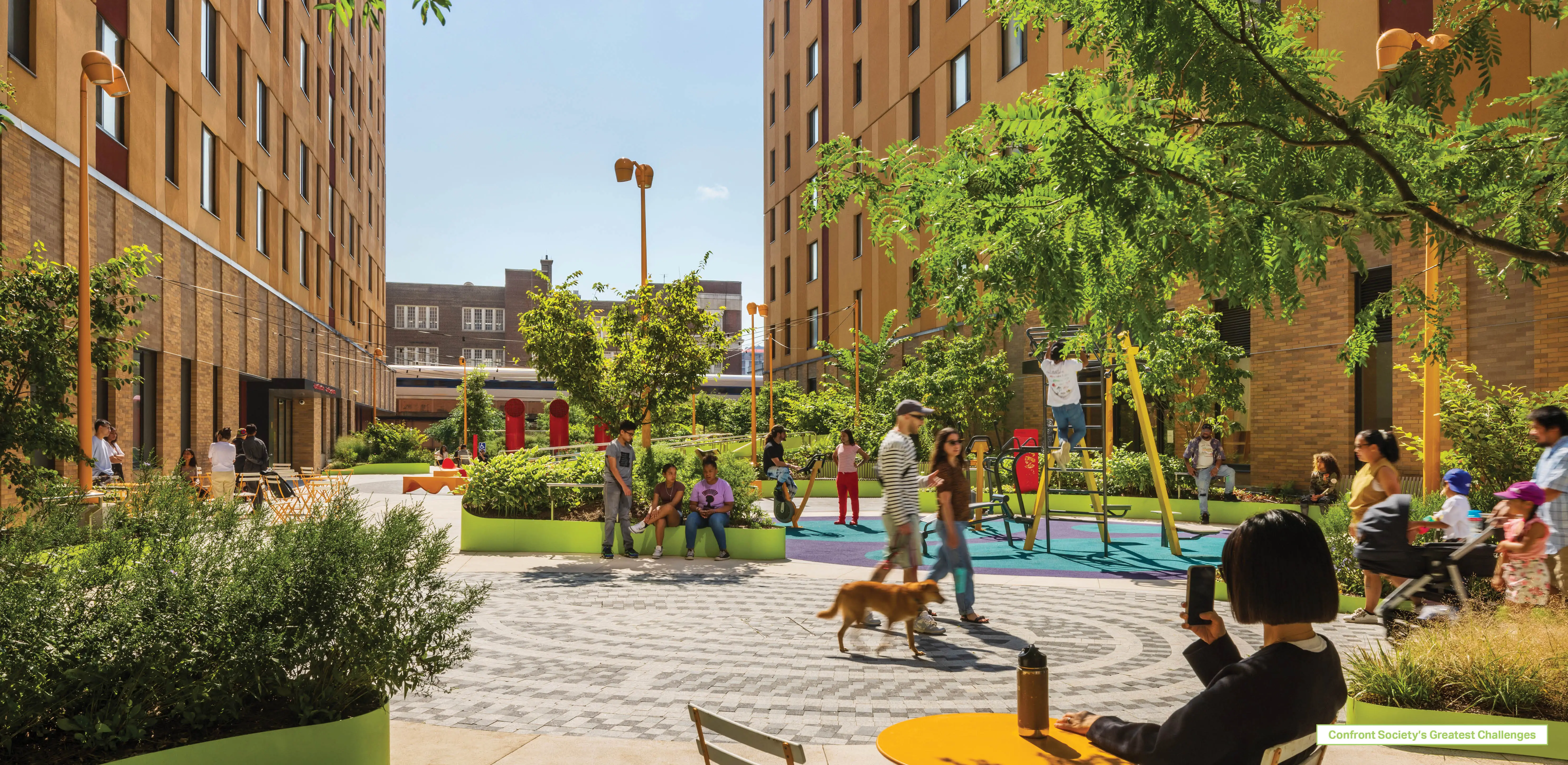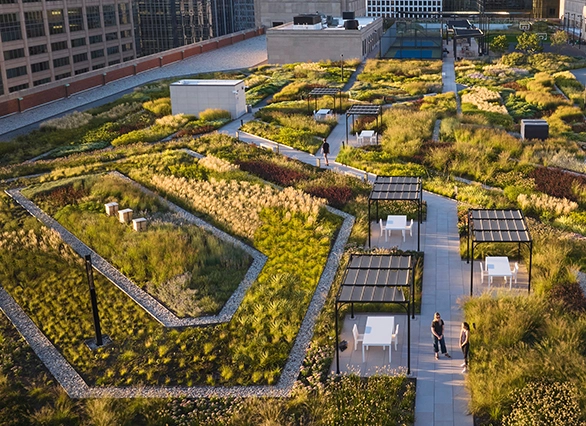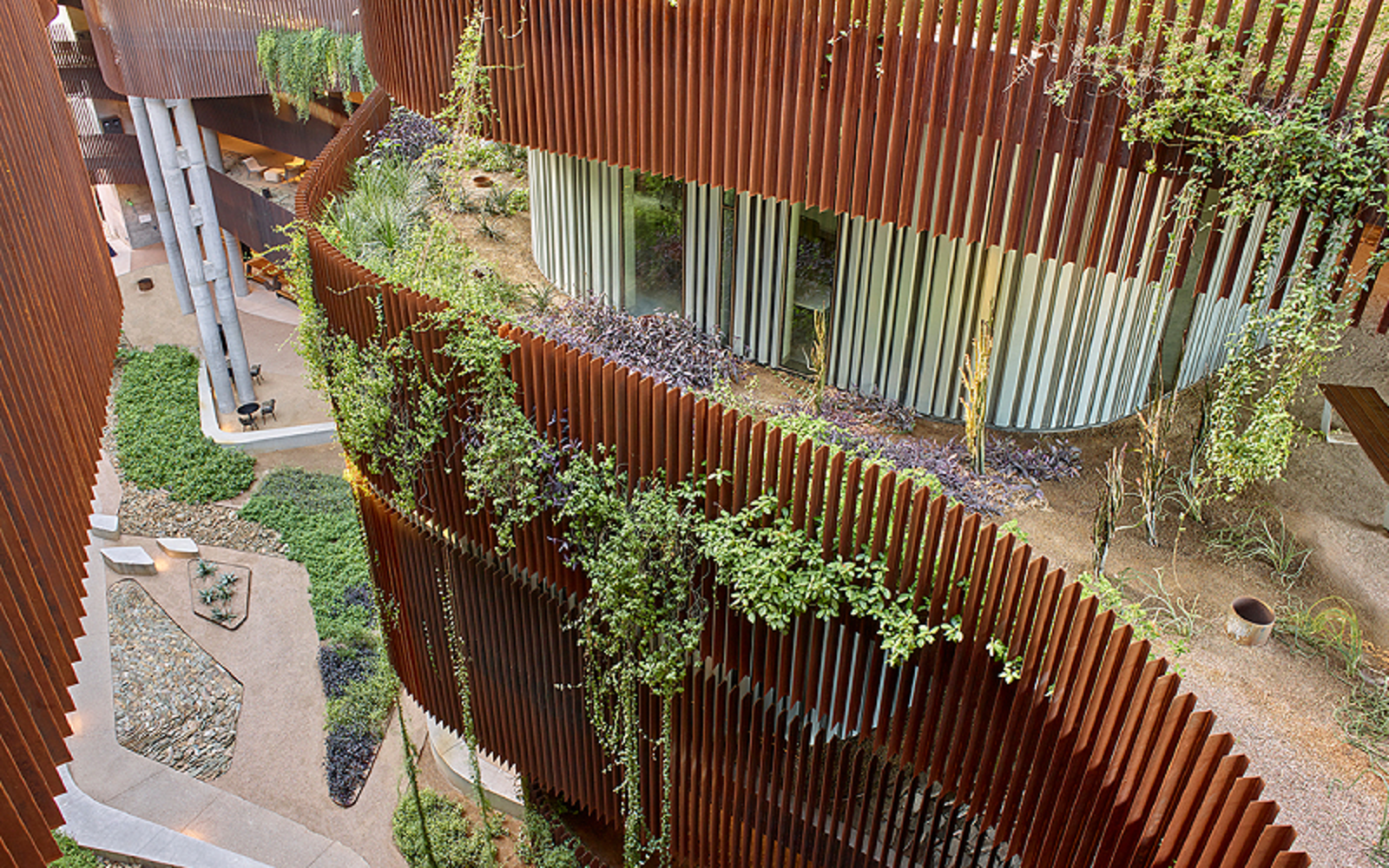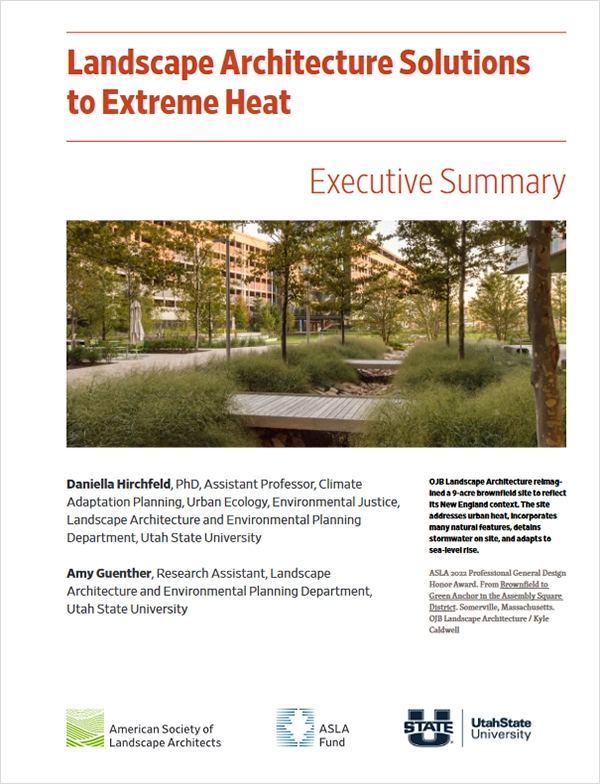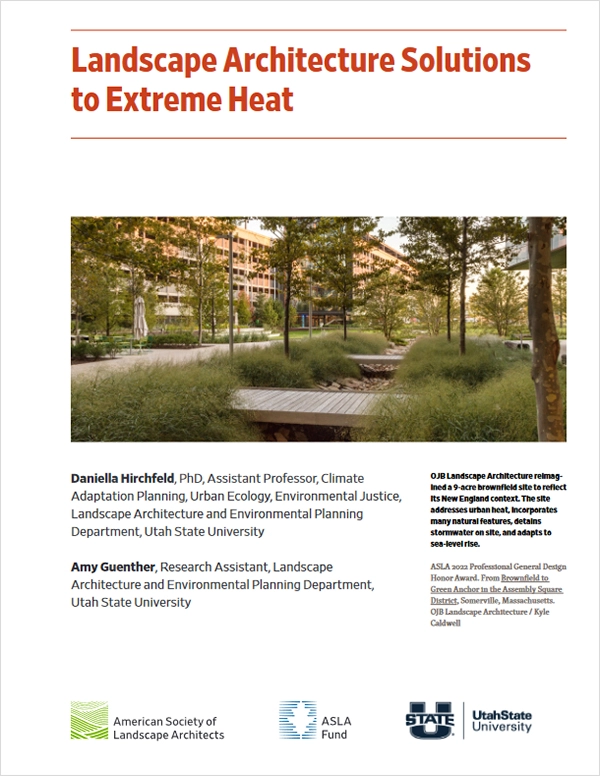Landscape Architecture Solutions to Extreme Heat
The American Society of Landscape Architects (ASLA) Fund has released peer-reviewed research on landscape architecture solutions to extreme heat, the deadliest climate impact:
The research was developed by Dr. Daniella Hirschfeld, ASLA, PhD, Assistant Professor of Climate Adaptation Planning in the Landscape Architecture and Environmental Planning Department at Utah State University. Dr. Hirschfeld won a competitive national grant from the ASLA Fund in 2023 to conduct the research.
“Extreme heat is expected to impact more people and places in the U.S. and across the globe in coming decades, with the greatest impacts to marginalized and underserved communities. An estimated 250,000 excess deaths are expected per year by 2050. Our research demonstrates the importance of maximizing the benefits of nature-based solutions to extreme heat. And landscape architects do that every day through their critically important planning and design work,” Dr. Hirschfeld said.
“While we were developing our Climate Action Plan, landscape architects told us what they needed most was authoritative evidence that demonstrates all the great benefits of their work. We are thrilled Daniella brought the research together to make the strongest case to policymakers, community groups, allied professionals, and the public,” said ASLA CEO Torey Carter-Conneen. “We now have the best science on landscape architecture strategies for extreme heat on hand.”
Dr. Hirschfeld and her team reviewed more than 100 peer-reviewed studies that looked at planning and designing nature-based solutions that reduce the impacts of extreme heat published from 2007 to 2022. They synthesized the findings in a research study and executive summary, which includes case studies and project examples.
Hirschfeld and her team found from the research that:
- Increasing the number of nature-based solutions within a community, the size of these solutions, and the amount of greenery or trees will decrease temperatures. While there is not a direct relationship between every tree and degree of temperature reduction, it’s clear from the literature that more greenery produces greater temperature benefits.
- The way nature-based solutions are distributed throughout a neighborhood or city makes a difference. Research shows that the more green spaces are connected to one another the greater temperature reductions benefits they provide.
Hirschfeld also found that four key landscape architecture strategies reduce heat impacts:
- Increase tree percentage in parks and green spaces
- Provide shade on sites
- Use plant materials and water instead of hardscape
- Use green ground cover, including grasses and shrubs

.webp?language=en-US)


